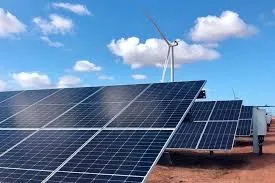efficacy of solar panels
The Efficacy of Solar Panels An Overview
Solar panels have emerged as a pivotal technology in the quest for sustainable energy solutions. With increasing concerns over climate change, fossil fuel depletion, and energy security, the efficacy of solar panels has become a focal point in both governmental policy and personal investment. This article aims to explore the effectiveness of solar panels in harnessing solar energy, their efficiency ratings, and factors influencing their performance.
Solar panels, primarily composed of photovoltaic (PV) cells, convert sunlight directly into electricity. The efficiency of these panels refers to the proportion of sunlight that can be converted into usable electrical energy. Currently, the efficiency of commercial solar panels typically ranges from 15% to 22%. High-efficiency models, which often utilize advanced technologies such as monocrystalline silicon, can achieve efficiencies upwards of 23%. Research continues to push these boundaries, with some experimental models exceeding 30% in laboratory settings.
There are several factors that influence the efficacy and overall performance of solar panels. First and foremost is the amount of sunlight they receive. Geographic location, weather patterns, and seasonal changes can significantly impact solar output. For instance, areas with high solar irradiance, such as deserts, are ideal for solar panel installations, while regions with frequent cloud cover may yield lower energy production.
Additionally, the angle and orientation of the panels also play a crucial role. Solar panels should ideally be positioned to capture the maximum amount of sunlight throughout the day. This often means tilting them at an angle that aligns with the latitude of the installation site, as well as ensuring that they are oriented toward the sun during peak hours.
efficacy of solar panels

Another critical factor is the temperature. Interestingly, while solar panels require sunlight to generate energy, extremely high temperatures can reduce their efficiency. Most solar panels are rated for peak efficiency at around 25°C (77°F). As temperatures rise above this threshold, the efficiency can decrease, making cooling mechanisms or specially designed panels necessary in hotter climates.
The material composition of solar panels affects their efficacy as well. Traditional silicon panels are known for their reliability and long lifespan, but new materials, such as thin-film solar cells and perovskites, are emerging, offering potential benefits such as lower manufacturing costs and more versatile applications.
Moreover, technological advancements continue to enhance the performance of solar panels. Innovations such as bifacial panels, which capture sunlight from both sides, and integrated solar tiles are making solar energy more accessible and efficient. As energy storage solutions, like advanced battery systems, improve, the capacity to store and use solar energy when production is low also enhances the overall efficacy of solar installations.
In conclusion, the efficacy of solar panels is a dynamic aspect of renewable energy technology that is greatly influenced by multiple factors, including geographic location, technological innovations, and environmental conditions. As research and development continue to advance, the potential for solar panels to provide a significant share of global energy needs becomes increasingly viable, making them a cornerstone of sustainable energy strategies for the future.
-
Unlocking Energy Freedom with the Off Grid Solar InverterNewsJun.06,2025
-
Unlock More Solar Power with a High-Efficiency Bifacial Solar PanelNewsJun.06,2025
-
Power Your Future with High-Efficiency Monocrystalline Solar PanelsNewsJun.06,2025
-
Next-Gen Solar Power Starts with Micro Solar InvertersNewsJun.06,2025
-
Harnessing Peak Efficiency with the On Grid Solar InverterNewsJun.06,2025
-
Discover Unmatched Efficiency with the Latest String Solar InverterNewsJun.06,2025







